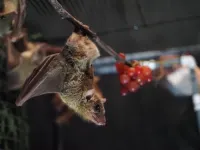(Press-News.org) (Santa Barbara, Calif.) — The crucial role of social emotions in our lives and in society cannot be overstated. Empathy, guilt, embarrassment, pride and other feelings we experience in the context of other people govern and motivate how we act, interact and the countless decisions we make. Which is why a more holistic approach, one that integrates the various ways these emotions are studied, is necessary to gain insight and address gaps in knowledge. That’s according to researchers from UC Santa Barbara, New York University School of Medicine and East China Normal University.
“I think researchers are realizing more and more that there needs to be some change, and a holistic understanding has become a popular idea in the field,” said UC Santa Barbara social psychologist Hongbo Yu, the lead author of a paper that appears in the journal Nature Reviews Psychology.
Social emotions are complex, and according to the paper, multiple psychological and neurocognitive processes might be acting simultaneously during social interactions, requiring a framework that can analyze these emotions along different dimensions.
There are three major domains of empirical research on social emotions in psychology and cognitive neuroscience, the authors assert. One examines why these emotions exist and their role in survival and reproduction. Another investigates the cognitive operations and psychological processes behind social emotions, looking for rules that determine which emotion one feels and at what intensity. The third measures how biological processes in the brain and body give rise to these emotions.
These domains correspond easily with a framework advanced by late 20th-century neuroscientist David Marr. He proposed a three-level analysis approach to studying cognitive processes, with a computation level that in the case of social emotions would examine goals and functions, or why the emotions exist, an algorithm level that looks at underlying cognitive operations, and an implementation level that looks for evidence of these emotions in the body. Originally formulated for visual processes, the framework has since been applied to a variety of areas that require the processing of complex information.
In this way, the researchers say, it becomes possible to connect external stimuli to internal processes and vice versa, or to tease apart inherent processes from context-dependent ones.
“It's important because changes in a process at one level may change the process at another level,” Yu said. “And there are dependencies and constraints across levels.”
Take guilt, for instance, the moral pain experienced at having harmed someone else. Without knowing its adaptive purpose (the computation level) — for instance, the maintenance and repair of important relationships — it becomes a challenge to design experiments that creates the context for that emotion, Yu said.
“With the guidance of a clear understanding of the goal, we can then design a game in which the participants interact in real-time,” he added. In the context of social emotions, he added, real-time interaction is particularly important, rather than tasks that require participants to imagine situations that could elicit the feeling (in this case guilt) but not the necessity or opportunity to follow through on the social aspect of the emotion (such as restore the relationship). “The psychological and the brain processes that engage may be different than when there is an actual interaction.”
From there, suggest the researchers, investigators could analyze the emotions that arise using mathematical models in combination with neuroimaging techniques to understand the psychological and brain processes in a more quantitative and precise manner (algorithm), as well as the biological signals (implementation). “There are many different measures and tools for different brain processes, and they all have different tradeoffs between their temporal precision and spatial precision,” Yu added, “so researchers need to find the best approach for their research question.”
Implementing this framework will take a little work, Yu said. Currently, researchers in the field tend to specialize in one or two domains, and social psychology in general — and social emotions in particular — have relied mainly on verbal theory and verbal hypothesis. This framework, according to the researchers, can not only add levels of precision to future studies but also shed new light on existing evidence. “We may be able to confirm previous verbal hypotheses, or perhaps resolve conflicts between multiple hypotheses,” he added.
“What we propose is that first we need to have more conversations,” said Yu, who as a cognitive neuroscientist dwells primarily in the implementation level of the framework. But he has seen the potential gain of incorporating computational modeling, and has found his horizons broadened when studying the goals and functions of social emotion.
“I think researchers with more expertise at different levels should pay attention, and be open-minded with other researchers,” he said.
END
A holistic framework for studying social emotions
2024-02-29
ELSE PRESS RELEASES FROM THIS DATE:
Astronomers measure heaviest black hole pair ever found
2024-02-29
Nearly every massive galaxy hosts a supermassive black hole at its center. When two galaxies merge, their black holes can form a binary pair, meaning they are in a bound orbit with one another. It’s hypothesized that these binaries are fated to eventually merge, but this has never been observed [1]. The question of whether such an event is possible has been a topic of discussion amongst astronomers for decades. In a recently published paper in The Astrophysical Journal, a team of astronomers have presented new insight into this question.
The team used data from the Gemini North telescope in ...
Specific brain support cells can regulate behaviors involved in some human psychiatric disorders
2024-02-29
UCLA Health researchers have discovered a group of specialized support cells in the brain that can regulate behaviors associated with human neuropsychiatric disorders.
The study, published in the journal Nature, focused on a group of cells known as astrocytes – star-shaped cells that tile the central nervous system and provide a support structure for the neural communication networks.
While neurons have long been understood to have primary control of behavior, the study found that a distinct group of astrocytes located deep in the central region of the brain, known as the central striatum, may also regulate communications between neurons. Unlike ...
Microbial viruses act as secret drivers of climate change
2024-02-29
COLUMBUS, Ohio – In a new study, scientists have discovered that viruses that infect microbes contribute to climate change by playing a key role in cycling methane, a potent greenhouse gas, through the environment.
By analyzing nearly 1,000 sets of metagenomic DNA data from 15 different habitats, ranging from various lakes to the inside of a cow’s stomach, researchers found that microbial viruses carry special genetic elements for controlling methane processes, called auxiliary metabolic genes ...
Shining a light on the effects of habituation and neural adaptation on the evolution of animal signals
2024-02-29
A new paper published in The Quarterly Review of Biology examines the possible effects of two properties of receiver playing fields documented in studies of animal psychology—habituation and neural adaptation—on the efficacy of mate choice signals.
In “A Bridge between Animal Psychology and Sexual Selection: Possible Effects of Habituation and Neural Adaptation on Mate Choice Signals,” William G. Eberhard notes that researchers have paid little attention to habituation and neural adaptation in relation to sexual selection.
Eberhard argues in favor of adding further dimensions to studies of female choice, noting that standard ...
The secret lives of roots: Tropical forest root systems are central to improving climate change predictions
2024-02-29
International research co-authored by Joshua Fisher, associate professor in Chapman University’s Schmid College of Science and Technology, suggests that studying root function in tropical forests could help vegetation models improve predictions of climate change. Their study was published on Feb. 28 in New Phytologist.
When it comes to understanding climate change, vegetation models are vital tools that help scientists study plants’ adaptation strategies to changing environmental conditions, including drying, warming and elevated carbon ...
Similar genetic elements underlie vocal learning in mammals
2024-02-29
The vocalizations of humans, bats, whales, seals and songbirds vastly differ from each other. Humans and birds, for example, are separated by some 300 million years of evolution. But scientists studying how these animals learn to "speak" have time and again seen surprising similarities in the connections in brain regions that support this vocal learning.
In a paper published in the journal Science, a multi-institutional team led by scientists at Carnegie Mellon University and the University of California, ...
Q&A: How a potential treatment for Alzheimer’s disease could also work for Type 2 diabetes
2024-02-29
Of the 38 million Americans who have diabetes at least 90% have Type 2, according to the Centers for Disease Control and Prevention. Type 2 diabetes occurs over time and is characterized by a loss of the cells in the pancreas that make the hormone insulin, which helps the body manage sugar.
These cells make another protein, called islet amyloid polypeptide or IAPP, which has been found clumped together in many Type 2 diabetes patients. The formation of IAPP clusters is comparable to how a protein in the brains of Alzheimer's disease patients sticks together to eventually form the signature plaques associated with that ...
Cyber-physical heating system may protect apple blossoms in orchards
2024-02-29
UNIVERSITY PARK, Pa. — Spring frosts can have devastating effects on apple production, and a warming climate may be causing trees to blossom early, making them more susceptible to the damaging effects of extreme cold events. Growers’ attempts to prevent the flowers from freezing by attempting to heat the canopies of their orchards largely have been inefficient.
To deal with the worsening problem, Penn State researchers devised a frost protection cyber-physical system, which makes heating decisions based on real-time temperature and wind-direction data. The system consists of a temperature-sensing device, a propane-fueled heater that ...
NYC ranks safest among big US cities for gun violence, new research from NYU Tandon School of Engineering reveals
2024-02-29
New York City ranks in the top 15 percent safest of more than 800 U.S. cities, according to a pioneering new analysis from researchers at NYU Tandon School of Engineering, suggesting the effectiveness of the city’s efforts to mitigate homicides there.
In a paper published in Nature Cities, a research team explored the role that population size of cities plays on the incidences of gun homicides, gun ownership and licensed gun sellers.
The researchers found that none of these quantities vary linearly with the population size. ...
A landmark study maps the precise orchestration of prenatal development
2024-02-29
In a landmark study, researchers at University of Washington and The Jackson Laboratory have characterized, in exacting detail, the rapid series of events that transform a single fertilized cell into a living, complex being. The work, reported this month in Nature, not only has enabled the team to explore which genes drive the differentiation of hundreds of cell types, but also shows, for the first time, that there are very rapid changes in genetic activity within the hour immediately following birth, underscoring the speed with which newborns must adapt.
“The ...



